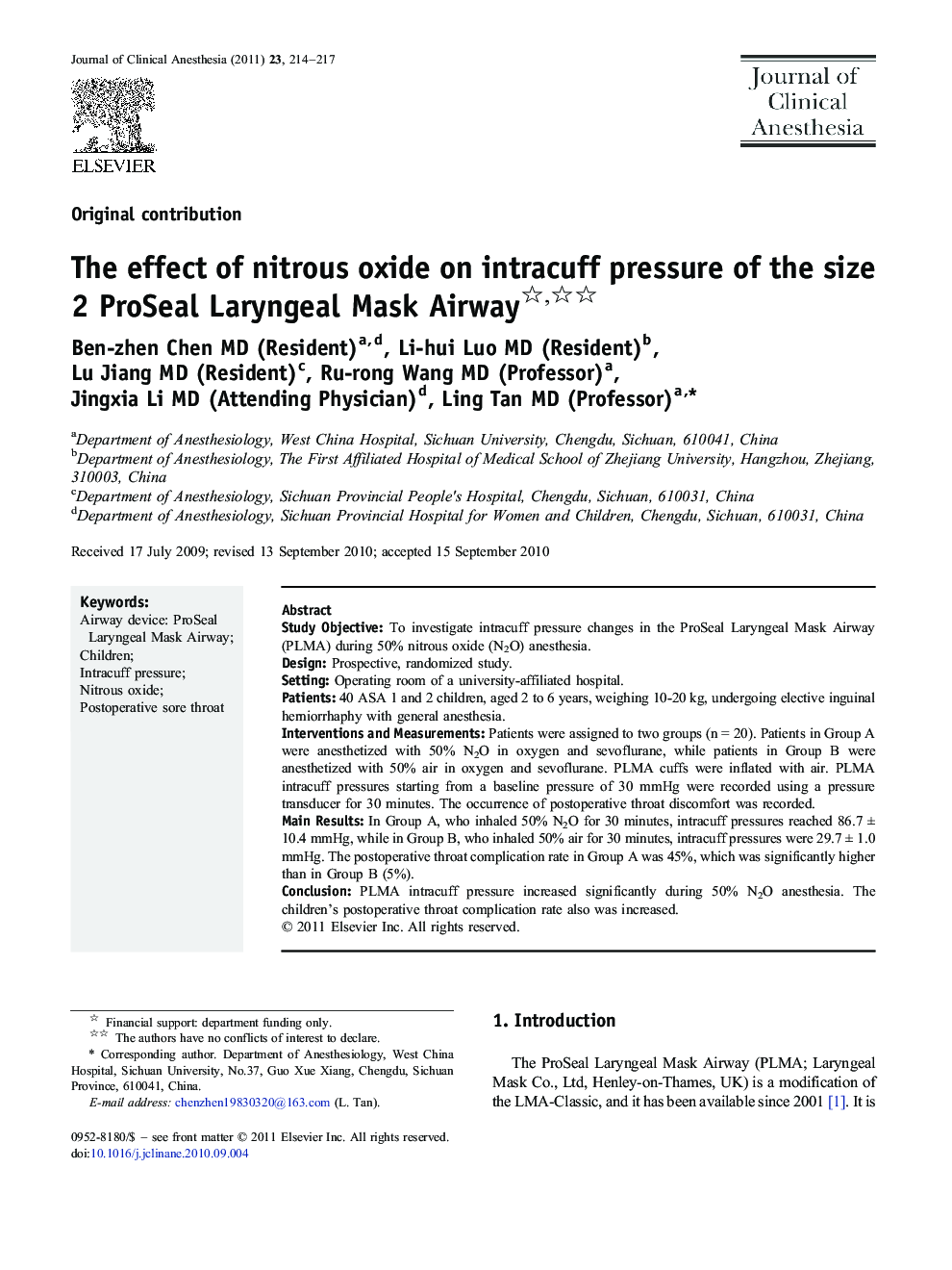| Article ID | Journal | Published Year | Pages | File Type |
|---|---|---|---|---|
| 2762803 | Journal of Clinical Anesthesia | 2011 | 4 Pages |
Study ObjectiveTo investigate intracuff pressure changes in the ProSeal Laryngeal Mask Airway (PLMA) during 50% nitrous oxide (N2O) anesthesia.DesignProspective, randomized study.SettingOperating room of a university-affiliated hospital.Patients40 ASA 1 and 2 children, aged 2 to 6 years, weighing 10-20 kg, undergoing elective inguinal herniorrhaphy with general anesthesia.Interventions and MeasurementsPatients were assigned to two groups (n = 20). Patients in Group A were anesthetized with 50% N2O in oxygen and sevoflurane, while patients in Group B were anesthetized with 50% air in oxygen and sevoflurane. PLMA cuffs were inflated with air. PLMA intracuff pressures starting from a baseline pressure of 30 mmHg were recorded using a pressure transducer for 30 minutes. The occurrence of postoperative throat discomfort was recorded.Main ResultsIn Group A, who inhaled 50% N2O for 30 minutes, intracuff pressures reached 86.7 ± 10.4 mmHg, while in Group B, who inhaled 50% air for 30 minutes, intracuff pressures were 29.7 ± 1.0 mmHg. The postoperative throat complication rate in Group A was 45%, which was significantly higher than in Group B (5%).ConclusionPLMA intracuff pressure increased significantly during 50% N2O anesthesia. The children's postoperative throat complication rate also was increased.
